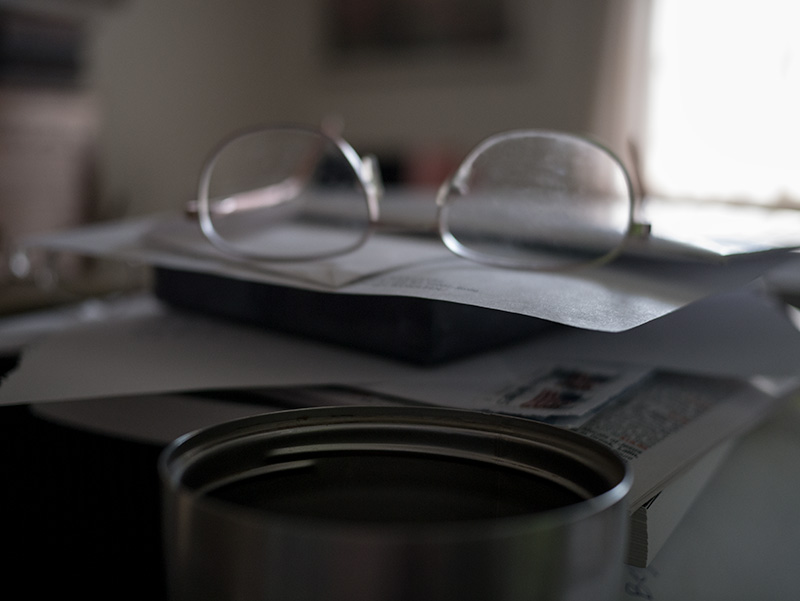 ([Look at this for a few beats and then see footnote at bottom of post])
([Look at this for a few beats and then see footnote at bottom of post])
Some pics made since Tuesday with the lately arrived GX1. As you can see I gotta get out of the house more....
Mike
Footnote: I wonder if you saw this as a face right away. I've always been fascinated with the way our brains are predisposed to see faces...we're probably more sensitive to faces than any other visual phenomenon. If you didn't see it as a face, go back up to it and see if you can help seeing it as a face now that I've suggested it....
Original contents copyright 2013 by Michael C. Johnston and/or the bylined author. All Rights Reserved. Links in this post may be to our affiliates; sales through affiliate links may benefit this site.
(To see all the comments, click on the "Comments" link below.)
Featured Comments from:
Frank: "Which lens? How did you get such depth of field with this small sensored camera?"
Mike replies: My fave, the Panasonic 20mm ƒ/1.7. Shallow d.o.f. is as much a function of where the plane of focus is (and focal length) as aperture. The closer you are, the shallower the d.o.f. Think of it, have you ever seen a macro picture of a subject with depth that didn't have the background out of focus? In fact, Micro 4/3 has just about the right balance for me...enough d.o.f. but not too much.
James Sinks: "Mike, thanks for (finally!) posting some of your work on its own. I like the glasses photo best of all, but I spent the most time puzzling over the sunset. I never read artists' text first time 'round, and I just couldn't work out why there was an insanely bright sodium vapor lamp blasting through one window while I could clearly see daylight reflected through another."
Mike replies: Well, next time you see that golden sunset light, look at the sky 90 degrees from the sun.
If you're interested, here's the evolution of the "Sunset" shot—not very imaginative since the tripod was set up in the only place in my crammed-full office it could possibly go!
The one I used is the copied file. There were a couple of other possibilities, but I chose the one I did because of that rim of light on the top and right-hand side of the picture frame—I thought it was kinda cool that the shadow of the saddle bar—that's what the horizontal bars in windows are called—and the top of the picture frame happened to line up perfectly.
Note how the color of the direct sunlight changes as it gets later (the intensity changes because the sun was shining through bare trees, so as it moved it was relatively more or less obscured). I could keep an eye on what the sun was doing by watching its reflection in the glass, by moving my head a little bit to the right of camera position.
And here's the "grab shot" from a day or two earlier when I first noticed what the light was doing. This is literally taken from my desk where I sit to work, holding the camera up at arm's length—you know, just fiddling with the camera. I actually like this composition better—the Robert Colesberry Rule, "Stay in the wide"—but it needed more d.o.f. and a lower ISO and no way could I set the tripod up in this position.
Jan Kw: "Things that look like faces."
Mike replies: Some of those are wonderful!
Peter Wright: "I didn't see the face, and still don't except that I can understand how the components make up a face-like structure. I have difficulty remembering faces; even people I have seen regularly and then not seen for a few weeks can be difficult for me—it can be embarrassing! So perhaps this part of my brain doesn't work at an optimal level."
Mike replies: If so you have some distinguished company. The great neurologist Oliver Sachs suffers from prosopagnosia, a.k.a. face blindness. In his excellent book The Mind's Eye, in which he discusses it, he says that when he arrives at a restaurant to meet his personal assistant of ten years for lunch, she has to wave at him or he can't find her, because he doesn't recognize her face.
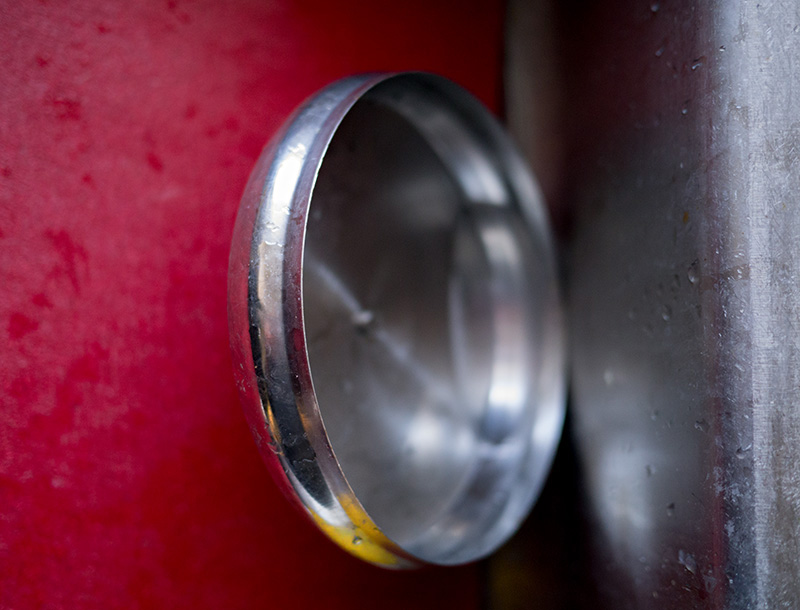
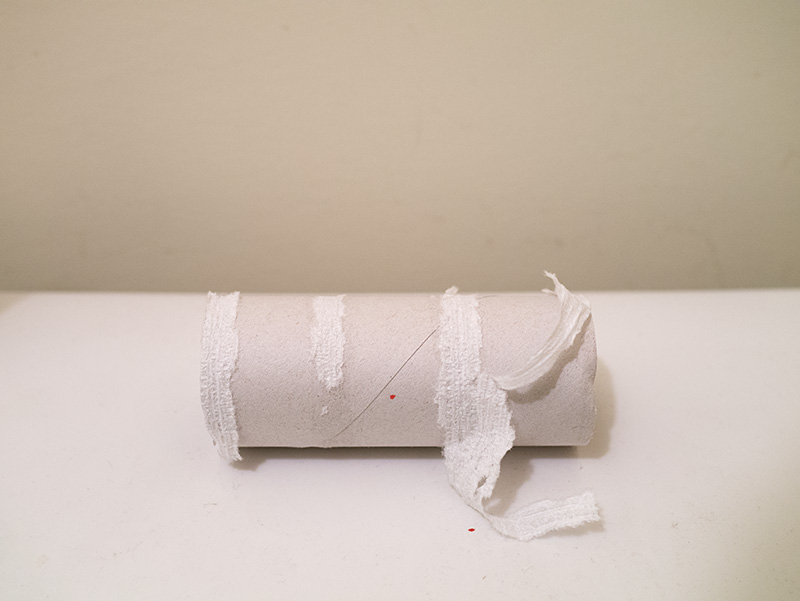
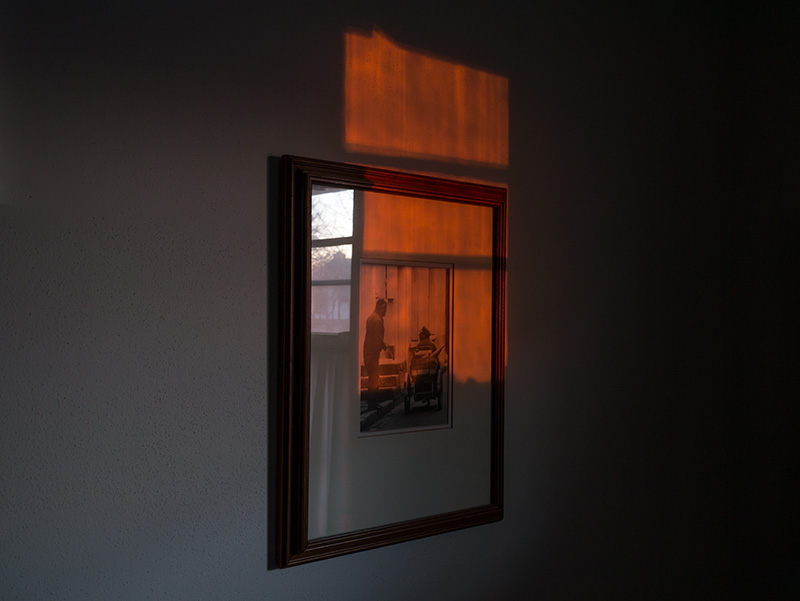
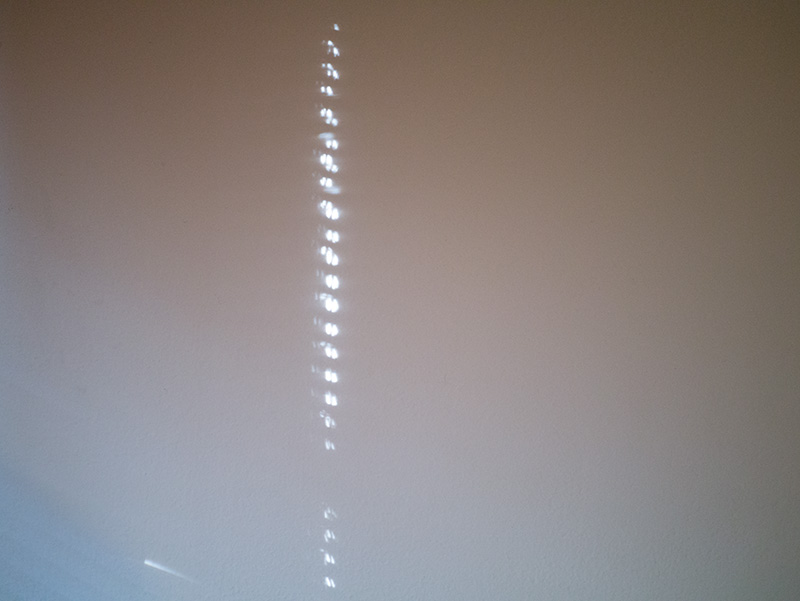
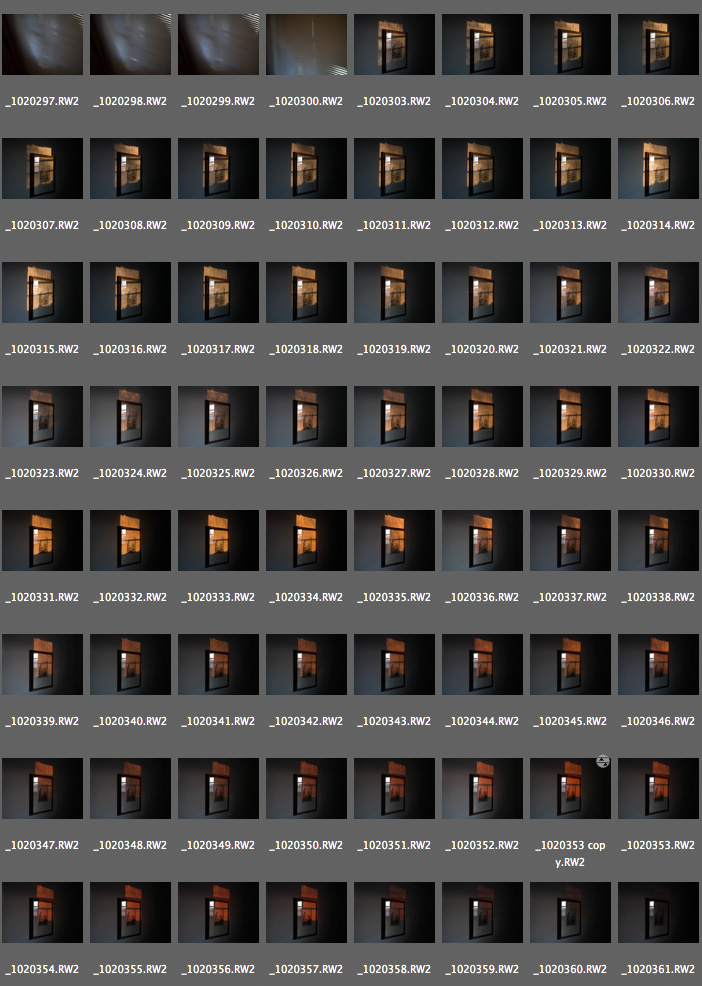
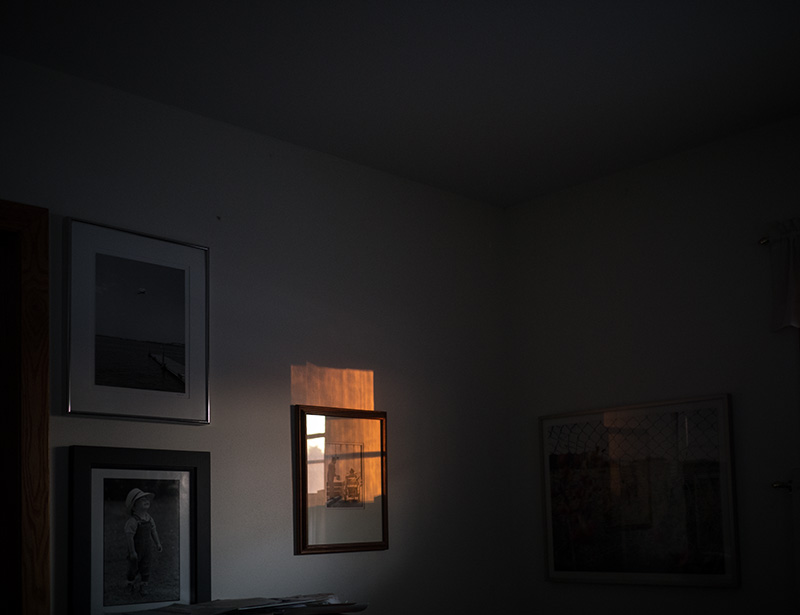



We are absolutely predisposed to see faces. Eyes in particular. I don't know if anyone's tried to measure what percentage of our brain is devoted to the task in any meaningful way, but it's huge. I think a good argument can be made that our brain is basically a face-reading device with some simple motor control, autonomic system, language and a really really primitive cognitive thing bolted onto it.
I did not see the face, but now I cannot see it any other way, as predicted! I confess I was trying to figure out what it had to do with the toilet paper roll, having been confused by the "see below" part.
Posted by: Andrew Molitor | Friday, 18 January 2013 at 06:38 PM
I did not see a face on first look, but certainly did on second look. This pattern-seeking is called "paredolia". It is an ancient function of our brains, vital to survival, once upon an epoch.
Posted by: Andrew Kirk | Friday, 18 January 2013 at 06:53 PM
Love "Red and yellow" and "Sunset", but this is generally the kind of thing I like. Well done, Mike!
"I gotta get out of the house more...."
Uta Barth might disagree.
Posted by: robert e | Friday, 18 January 2013 at 07:07 PM
I didn't see it as a face (at first), but seeing faces is probably the most common example of pareidolia. It is hard wired in our brains, which are pattern seeking organs. The brain will discern patterns, whether they are present or not.
I like "Sunset".
Posted by: Daniel Clements | Friday, 18 January 2013 at 07:19 PM
Miksang
Posted by: MarkB | Friday, 18 January 2013 at 07:21 PM
I'm so glad that you posted some of the results of your exercise! I especially like "Blood Spatter" and "Sunset." "Blood Spatter" is just my taste for minimalist/white-on-white images, with a thoughtful and precise composition. I give it bonus points for the tiny blood drops (I'm a sucker for bits of red in images and the drops suggest an interesting but unknown back story). I also like the way a bit of the paper has strayed above that center line, and the rhythmic repetition of shapes in those strips of remaining paper. Just lovely, IMO.
I find "Sunset" fascinating--such interesting layers of mirror/window/reflected light (and a nice repeating of shapes in this one, too). The rectangle of burnt orange reminds me of a film negative; I don’t think this would be half as interesting if it were a different color.
I hope you post more of these “exercises.” I admire anyone who moves beyond his normal bounds of comfort out of self-motivation rather than necessity; maybe you can motivate some of the rest of us to do the same. :-)
Posted by: Elisabeth Spector | Friday, 18 January 2013 at 07:31 PM
Nah, no face in that. Maybe responses to this photo are a good indicator of where we lie on the humanist to misanthrope scale?
Posted by: Peter Barnes | Friday, 18 January 2013 at 07:37 PM
I didn't see a face, and still don't when I look at it longer. Is the face supposed to be right side up? If it is, maybe I don't see it because the glasses are upside down.
Steve
Posted by: Steven ralser | Friday, 18 January 2013 at 07:59 PM
Fit should be right in my previous post.
Posted by: Steven ralser | Friday, 18 January 2013 at 08:00 PM
"The Dragoon" will be for sale in 5...4...3...2...
Posted by: JohnMFlores | Friday, 18 January 2013 at 09:07 PM
I like "Sunset". It has great form but the color wins. It's a keeper.
The face eluded me and still does. I wonder what a poll would reveal?
bd
Posted by: Bob Dales | Friday, 18 January 2013 at 09:18 PM
I like these photos, especially Blood spatter, but they depress me a little. I was recently diagnosed with agoraphobia (for me, it manifests itself as a fear of leaving my apartment).
Posted by: LJ Slater | Friday, 18 January 2013 at 10:23 PM
I might have recognized it without prompting if the glasses were right-side up. Did the GX1's face recognition feature detect it as such?
My pre-elph Ixus point-and-shoot detects faces (eyes), even those of statuary like these smiling asparas in Angkor Wat.
But didn't recognize this iconic Bayon face which is hyper-heroic in scale.
Recent phone and tablet cameras (as well as freeware photo editors) have pushed this further: boxing people's faces for tagging purposes (the default setting) as if we know all the people we shoot in our pictures. Quite annoying (them boxes), really. I guess camera features pandering to social media, help to sell phones, tablets, and point-and-shoots.
With more practice—dare I say—my serious pics ought to be as good as your exercises.
Posted by: Sarge | Friday, 18 January 2013 at 10:25 PM
I can see the face on examination, but it didn't occur to me until you suggested it. I'm not sure, but I noticed immediately that the glasses were upside down, and since the jar lid "mouth" is below them, that makes the relationship wrong for a face, and that may be what blocked it for me. Maybe. Or maybe it all happens at a much lower level and it just didn't for me.
Posted by: David Dyer-Bennet | Friday, 18 January 2013 at 10:53 PM
No did not see a face. I did think I saw an interesting lens on first take. I tried to figure out what make it was. On second take it looks like a coffee cup.
I guess 90% of my brain is wired to guess the camera and lens. Or just fixated on lenses.
Posted by: David Bateman | Friday, 18 January 2013 at 11:01 PM
Love Sunset.
Posted by: Robert Roaldi | Friday, 18 January 2013 at 11:08 PM
Blood Splatter. TMI.
Posted by: Bob Rosinsky | Friday, 18 January 2013 at 11:54 PM
The GX1 is a cute little thing, isn't it?
Posted by: BigHank53 | Saturday, 19 January 2013 at 12:46 AM
Red and Yellow :)
great shot.
Posted by: anurag agnihotri | Saturday, 19 January 2013 at 01:36 AM
I didn’t see the face initially. I think the orientation of the glasses threw me. PBS has an interesting example of how we react to an upside down face on their site. Just click the image to rotate it. http://www.pbs.org/wnet/brain/illusions/form.html
PBS also aired something last year that discussed Prosopagnosia (face blindness). I’d never heard of this and the fact that it may affect up to 2.5% of the population seems hard to believe. Long live Big Bird.
Posted by: Jim A | Saturday, 19 January 2013 at 03:06 AM
Some times it's easier to do it in video:
http://www.youtube.com/watch?v=J9IQ0rPrb98
http://www.youtube.com/watch?v=35mi4yfdBAc
Good to see that you are exploring unchartered waters, I found the pictures refreshing in a way.
Posted by: Jose Luis | Saturday, 19 January 2013 at 03:15 AM
Sunset is totally awesome. All very Ernst Haas this. Good stuff.
Posted by: Koen Lageveen | Saturday, 19 January 2013 at 03:37 AM
Mike what is it about humanity that predisposes some of us to look at a random collection of photos such as these and see deep meaningfull things that the majority are blind to.
This more than anything is what turns off most people when confronted with the musings of some so called experts in the arts,photography,painting,sculpture etc.
These are just photos of mundane everyday subjects no more no less,get real people.
[Exactly the point of the exercise, Michael. Perhaps you missed the earlier post that set the context for the discussion. --Mike]
Posted by: Michael Roche | Saturday, 19 January 2013 at 04:40 AM
No Face.
Posted by: Terence Hogben | Saturday, 19 January 2013 at 05:31 AM
I'm one of those who failed to see a face, but when I looked at it second time I saw a teacher I had in university. His mouth was exactly like that.
On a more serious note, I just love the subtlety of the sunset picture.
Posted by: Manuel | Saturday, 19 January 2013 at 06:41 AM
You don't have to travel to Antartica to make interesting photographs; you just need to use your creativity. You are always the teacher, Mike, whether intentional or not.
Good work.
Posted by: Player | Saturday, 19 January 2013 at 07:09 AM
I don't really see the face, even after reading the text. I can tell myself that the glasses must be eyes, and the round object in the foreground (coffee jar lid? lens hood?) could be a mouth, but I don't see it. Despite often seeing faces in rock formations, trees, clouds etc.
I like the Sunset, though.
Posted by: Alex Monro | Saturday, 19 January 2013 at 07:42 AM
Hiya!
> see below*
So, I kept flicking back and forth between the "face" photo and the one immediately below it (Blood spatter), and I must confess, panicking a little because I 'didn't get it.'
[Fixed now, hopefully. --Mike]
Posted by: Dean Johnston | Saturday, 19 January 2013 at 08:02 AM
No face. Like pictures.
Posted by: Dogman | Saturday, 19 January 2013 at 09:08 AM
I didn't see a face. but I did think "mike, you nood to clean your glasses"
Posted by: Ron Wolfgram, Saint Paul, MN | Saturday, 19 January 2013 at 09:28 AM
I didn't see it as a face initially, but after reading the footnote, I can't *not* see the face.
Posted by: Matthew Miller | Saturday, 19 January 2013 at 09:33 AM
Sorry, no face even when I try to see one.
Posted by: Henry Rogers | Saturday, 19 January 2013 at 09:40 AM
Nope. I can't make your picture coalesce into a face, even after the hint. As someone else said, maybe if the glasses were right-side-up?
I think my face recognition software may be damaged.
On the other hand, my E-P2 sees faces in toasters and random piles of junk. To find trompe l'oeil face pictures, all I have to do is wave it around the room.
Posted by: Paris | Saturday, 19 January 2013 at 09:52 AM
Just received as a present a copy of 'The Practice of Contemplative Photography' , by Karr and Wood (a previous Book of the Week recommendation). I'm enjoying the book and these quiet, contemplative photographs.
Posted by: Bahi | Saturday, 19 January 2013 at 10:44 AM
Sorry, to literal minded to see a face. Neat sunset shot though. My apartment is on the third floor facing due East so sometimes get the morning sun (living in Puget Sound, Washington, the sun is rare this time of year). The patterns cast by the blinds and tree branches just outside the windows have been subjects for my camera.
Posted by: John Robison | Saturday, 19 January 2013 at 10:51 AM
Thanks to this "exercise" I'm beginning to believe you are actually capable of producing captivating images, and in color, no less. But I'm not quite convinced. You will have to show more. Soon.
Posted by: Gordon Lewis | Saturday, 19 January 2013 at 11:26 AM
Very much like "Blood Spatter" and "Red and Yellow." I'm not sure what the latter is really a picture of but I like the textures.
P.S.: Hope the bleeding has stopped.
Posted by: Scotto | Saturday, 19 January 2013 at 12:12 PM
As for the eyeglasses being upside down, and whether this has affected facial-feature detection: the human visual brain has a peculiarity sometimes called the Thatcher Effect. Don't know if it's relevant, but... interesting.
Posted by: richardplondon | Saturday, 19 January 2013 at 02:24 PM
"The great neurologist Oliver Sachs suffers from prosopagnosia, a.k.a. face blindness."
So does Chuck Close. Here are the two of them talking about it on Radiolab:
http://www.radiolab.org/blogs/radiolab-blog/2010/jun/15/strangers-in-the-mirror/
Posted by: Ben | Saturday, 19 January 2013 at 02:46 PM
Amusing to read that you took a "grab shot" in your own study, but I understand perfectly. That's the thing about "getting out of the house" (or your neighborhood, your town, your county, etc.)--how much time had you spent in that room before you saw the phenomenon that led to "Sunset"? Or before you thought it would make a picture? There's always something to see, if we're talking about seeing artistically, especially if natural light is part of the equation.
Writing this reminds me of Giorgio Morandi and his bottles; Cezanne and his revisitings of a handful of subjects; or how much and how well Levitt, Eggleston, Meyer, Leiter saw on their walks or commutes.
But now you've given me something else to think about--another side of responsive seeing: I see plenty of things and take plenty of grab shots, but how often do I come back to a scene at the same time of day to do it properly (such as on a tripod)? Almost never. I stopped doing that when I realized that it's never exactly the same and I should get it as right as possible on the spot with whatever I have. That attitude is fine in and of itself, but ultimately isn't really an excuse for not trying again. After all, "not the same" can sometimes mean "better".
Posted by: robert e | Saturday, 19 January 2013 at 03:56 PM
This exercise reminded me of a "series" I once did. When my whole company got to/had to telecommute for a week while switching offices, I realized after a couple days that I felt more stiff and more sore working at home because I never got up from my chair. For the next few days, whenever I saw the light hit something interestingly, I got up and took a picture.
But mostly: I didn't see the face at first, but I do now. I wonder whether people would see it faster if the glasses were right side up?
Posted by: Marshall | Saturday, 19 January 2013 at 04:36 PM
Here it is:
http://mediastore.magnumphotos.com/CoreXDoc/MAG/Media/Home1/7/d/0/3/PAR32270.jpg
Jan Kw
Posted by: Jan Kwarnmark | Saturday, 19 January 2013 at 07:56 PM
Still trying, still no face!
Posted by: Henry Rogers | Sunday, 20 January 2013 at 06:10 AM
I have greatly enjoyed Oliver Sacks's work (specifically the man who mistook his wife for a hat and an anthropologist on mars). I had never known that he suffered from any condition that could have also featured in a case-study in either of these books. It almost seems a little ... ironic? Surprising, at least.
Posted by: Christian | Monday, 21 January 2013 at 02:44 PM